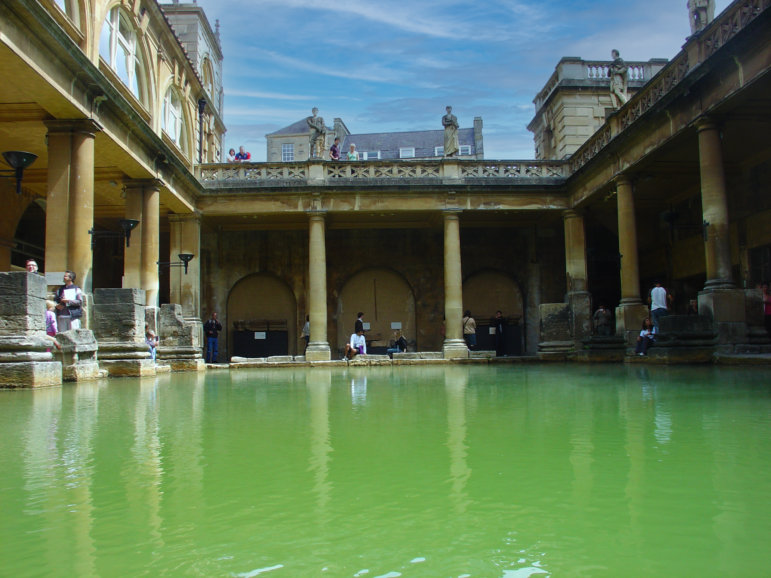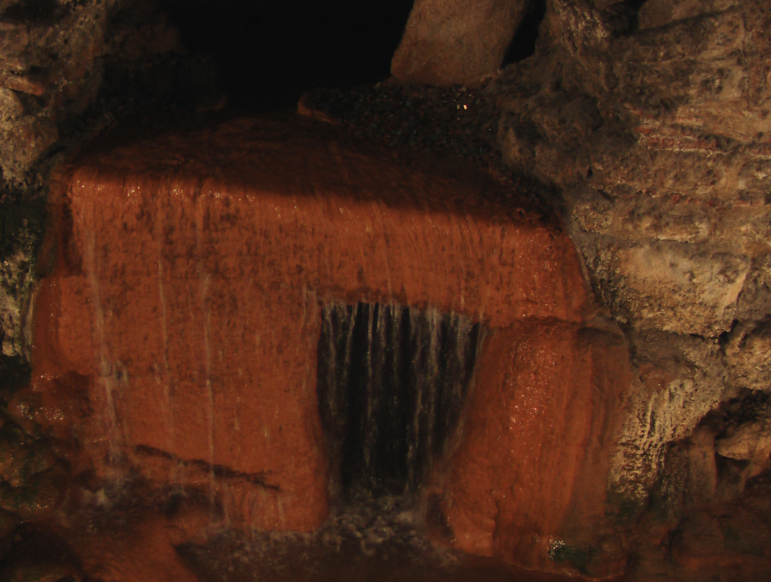BATH, England – The water of Sulis Minerva in Bath, UK, appears to have antibiotics, according to a new study published in the journal Microbe. Bath, UK, is both an ancient site of healing and a modern tourist attraction. The research, published last week, was conducted by students and academics from the University of Plymouth’s School of Biomedical Sciences and School of Biological and Marine Sciences, in collaboration with staff at the Roman Baths.
“People have visited the springs in Bath for thousands of years, worshipping at, bathing in, and drinking the waters over the centuries,” wrote Zofia Matyjaszkiewicz, co-author of the study and Collections Manager at the Roman Baths.
The Roman Baths in the city of Bath, Somerset, England, are among the best-preserved Roman public bathing facilities in the world. Originally, the area was named Aquae Sulis (Waters of Sulis) for the thermal waters in the Roman province of Britannia. The location was attested by Ptolemy in his work Geographia.
Sulis was a local deity worshipped by the Celts before the Roman occupation. She was primarily a goddess of healing and water, associated with the hot springs at Bath. When the Romans conquered Britain, they often merged their deities with local gods and goddesses to facilitate cultural integration and religious acceptance.
In Bath, Sulis was syncretized with Minerva, creating the composite deity Sulis Minerva.
The temple complex in Bath was constructed between 60 and 70 CE and dedicated to Sulis Minerva. It became a major center of worship. Pilgrims would come to bathe in the sacred waters and make offerings to the goddess for healing and protection. Everything from curse tablets to stolen clothes has been found during archaeological research of the site.

Roman Aquae Sulis temple complex in Bath, UK [Photo Credit: S. Ciotti
In his largely fictional Historia Regum Britanniae, Geoffrey of Monmouth recounts the discovery of the spring by the pre-Roman British king Bladud, who subsequently built the baths. In the early 18th century, Geoffrey’s obscure legend gained significant prominence, as it was used to endorse the therapeutic qualities of the waters. The story was further embellished with the claim that the spring had cured Bladud and his herd of pigs of leprosy by wallowing in the warm mud.
The research, published in the journal The Microbe, is the first to offer a detailed examination of the bacterial and archaeal communities in the waters of the Roman bath complex. Scientists collected samples of water, sediment, and biofilm from various locations within the temple complex, including the King’s Spring, where the waters reach around 45°C, and the Great Bath, with temperatures closer to 30°C.
These samples were analyzed using cutting-edge sequencing technology and traditional culturing techniques to isolate bacteria with antibiotic activity. Approximately 300 distinct types of bacteria were isolated across the Roman Baths site. Some of the bacteria were prominent for their antibiotic production, which became more pronounced with varying water temperatures.
“The research comes at a time when the need for new sources of antibiotics is at unprecedented levels, with the resistance of bacteria to currently used medication estimated to be responsible for the deaths of more than 1.25 million people globally each year,” the University of Plymouth wrote in a press release.
The scientists noted that significant additional investigation is required before the microorganisms found in the Roman Baths can be applied in the fight against disease and infection globally. However, this initial study indicates a clear potential for novel natural products within the hot springs to be explored further for possible clinical use.

Aquae Sulis spring entrance in Bath, UK [Photo Credit: S. Ciotti
According to the research team, if these healing substances are harvested on a large scale, they could be used to develop new and effective medicines that might address the problem of antimicrobial resistance, which occurs when microbes are repeatedly exposed to the same drugs and eventually develop resistance to them.
The research is now being expanded with new investigations set to begin in October 2024, focused on antibiotics produced by microorganisms in the Roman Baths and identifying which might have potential for future clinical use.
“This is a really important and very exciting piece of research. Antimicrobial resistance is recognized as one of the most significant threats to global health, and the hunt for novel antimicrobial natural products is gathering pace,” said Dr. Lee Hutt, Lecturer in Biomedical Sciences and senior author on the research. “This study has for the first time demonstrated some of the microorganisms present within the Roman Baths, revealing them as a potential source of novel antimicrobial discovery. There is no small irony in the fact that the waters of the Roman Baths have long been regarded for their medicinal properties and now, thanks to advances in modern science, we might be on the verge of discovering the Romans and others since were right.”
The Wild Hunt is not responsible for links to external content.
To join a conversation on this post:
Visit our The Wild Hunt subreddit! Point your favorite browser to https://www.reddit.com/r/The_Wild_Hunt_News/, then click “JOIN”. Make sure to click the bell, too, to be notified of new articles posted to our subreddit.